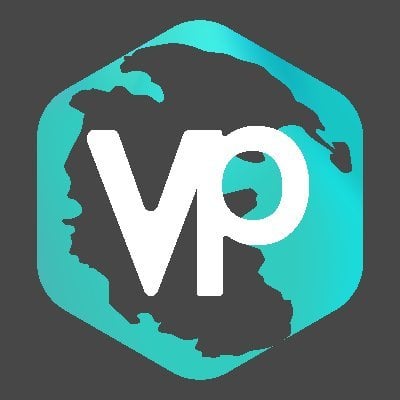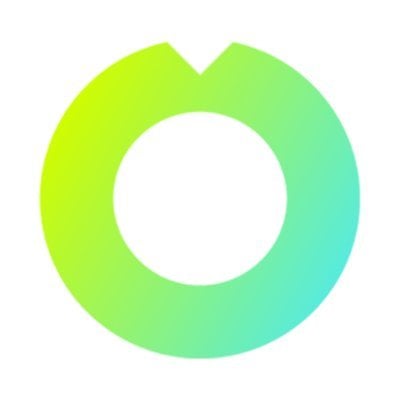| Job Position | Company | Posted | Location | Salary | Tags |
|---|---|---|---|---|---|
Stellar Development Foundation | San Francisco, CA, United States | $63k - $90k | |||
Figment | Toronto, Canada | $76k - $84k | |||
Virtual Pangea | Remote |
| |||
Frontier | United Kingdom | $90k - $110k | |||
| Learn job-ready web3 skills on your schedule with 1-on-1 support & get a job, or your money back. | | by Metana Bootcamp Info | |||
Wallfair | Remote | $81k - $81k | |||
BANXA 🚀 | New York, NY, United States | $54k - $90k | |||
BANXA 🚀 | Singapore, Singapore | $54k - $90k | |||
Crypto.com | Hong Kong, Hong Kong |
| |||
Crypto.com | Singapore, Singapore | $14k - $23k | |||
Dexterity Capital | Remote | $22k - $117k | |||
Wallfair | Remote | $81k - $81k | |||
Fractional | United States | $95k - $170k | |||
PolyCrypt | Remote | $35k - $80k | |||
PolyCrypt | Remote | $35k - $80k | |||
GameStop | Remote |
|
This job is closed
Open to considering remote candidates in the USA
Interested in working on cutting-edge blockchain technology and creating equitable access to the global financial system? Since 2014, the mission-driven team at the Stellar Development Foundation (SDF) has helped fuel the tremendous growth of the Stellar blockchain network, an open-source platform that operates at high-scale today. Developers and companies around the world build on it, and the SDF team is expanding to support the rapidly growing and changing Stellar ecosystem.
The SDF is working on projects that push the envelope on blockchain technology, from cross-chain interoperability to decentralized finance and we are looking for an experienced and hands-on engineer with a unique mix of technical blockchain expertise and strong product experience to join our tech strategy team. In this role, you will work cross functionally with stakeholders from the Stellar ecosystem and the broader blockchain community to design and implement novel protocols for bridging assets between networks and you will also contribute to decentralized finance applications. Your contributions will also have a direct impact on underserved populations by allowing them to take part in exciting new financial systems.
In this role, you will:
- Build integrations and bridges between Stellar and other blockchains.
- Design new protocols for Stellar to make it composable with other blockchains.
- Make Stellar interoperate with all financial and blockchain systems to support the foundation’s mission of creating equitable access to the global financial system.
- Be involved with all aspects of the software development process - from vision to final implementation.
Identify patterns in developer needs and design new protocols and services to increase developer velocity across our entire ecosystem. - Engage with our community of open source developers and partners on projects that encompass many different frameworks, languages, and ideas.
- Collaborate with the team on code review and design, and contribute to best practices for all of engineering at SDF.
- Investigate and refactor performance bottlenecks in order to continue scaling our API services.
- Design new platform functionality with the corresponding APIs for external developers.
- Build and maintain web services to support the foundation’s mission of creating equitable access to the global financial system.
- Provide assistance and guidance for our integration projects with our partners and other organizations on the Stellar network.
- Author detailed technical feature and protocol (RFC) specifications - we take design seriously, and we encourage everyone to be a part of our RFC processes.
You have:
- 4+ years of experience developing software on a team.
- Written blockchain applications in Go, Rust, or C++, and are a language polyglot.
- Strong computer science fundamentals: data structures, algorithms, distributed systems, and information retrieval.
- A curiosity that drives learning and understanding.
- Great communication skills and can advocate and lead technical discussions, especially during the design and code review process.
- A solid understanding of software design patterns, and how to build components that are reusable, extensible, and modular.
- Knowledge of existing frameworks and open source tools and are willing to build new frameworks when open ones do not exist.
- A passion for performance debugging and benchmarking.
- Enthusiasm about working on a small, growing team where you’ll be given a lot of autonomy.
- Openness, empathy, and care about putting the best ideas forward in a collaborative and helpful manner.
- Hands-on experience building novel cryptocurrency systems. These include, but are not limited to, decentralized finance (Uniswap, 0x, MakerDAO), confidentiality (grin, zcash, zkvm) and L2 solutions (payment channels, lightning).
- Experience in supporting production web services at scale.
Bonus points if:
- You have a BS or MS in Computer Science or other STEM fields.
- You generally enjoy working on a wide variety of smaller projects as opposed to regularly creating features in a single large system.
- You have a strong curiosity in blockchain technologies and cryptocurrencies, and understand the fundamentals of these systems.
What is the meaning of Layer 2?
Layer 2 in the context of cryptocurrency and blockchain technology refers to a secondary framework or protocol that is built on top of an existing blockchain system (the main chain or Layer 1)
The primary purpose of Layer 2 solutions is to solve the scalability and speed issues that many blockchains face, especially those that have become popular and heavily used, like Ethereum
Here are the key aspects of Layer 2 solutions:
- Scalability Enhancement: They help in scaling the main blockchain by handling transactions off the main chain. This reduces the burden on the main chain, allowing for faster and cheaper transactions.
- Types of Layer 2 Solutions: There are various forms of Layer 2 solutions, including state channels, sidechains, plasma chains, and rollups. Each has its own mechanism for interacting with the main chain and handling transactions.
- State Channels: These involve two parties engaging in numerous transactions outside of the main chain, which are then consolidated into a single transaction. This is especially useful for situations where multiple transactions occur between the same parties.
- Sidechains: These are separate blockchains that are connected to the main chain via a two-way peg. They operate independently and can have their own consensus mechanisms but are secured by the main chain.
- Plasma Chains: Plasma chains are similar to sidechains but with a more hierarchical structure. They report back to the main chain regularly and are optimized for mass transaction handling.
- Rollups: Rollups process and store transaction data on a sidechain but post transaction data to the main chain. They come in two varieties: optimistic rollups and zk-rollups, each with its own method of transaction verification.
- Security Considerations: While Layer 2 solutions are generally secure, they can have different security models compared to the main chain. This is an important consideration for users and developers.
- Impact on User Experience: For end-users, Layer 2 solutions can greatly improve the experience by reducing transaction fees and increasing transaction speeds.
- Adoption and Development: Many blockchain projects are actively developing Layer 2 solutions to enhance their networks. This is an ongoing area of innovation in the blockchain space.


